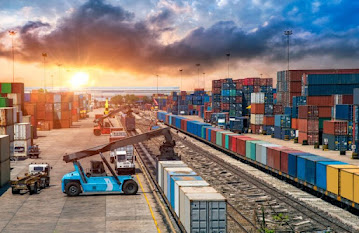Maximizing Rail Revenue: The Role of Revenue Technology Services
In the dynamic world of rail transportation, efficient revenue management is crucial for ensuring profitability and sustainability. Revenue management in the rail industry involves strategies and techniques aimed at optimizing fare pricing, seat inventory allocation, and overall revenue generation. In this context, Revenue Technology Services (RTS) play a pivotal role in helping rail operators navigate the complexities of revenue management to achieve their financial objectives.
RTS encompasses a suite of technological solutions tailored to the specific needs of the rail industry. These solutions leverage advanced algorithms, data analytics, and predictive modeling to empower rail operators with insights into passenger demand patterns, pricing elasticity, and competitor behavior. By harnessing the power of technology, rail companies can make informed decisions in real-time to maximize revenue while maintaining customer satisfaction.
One of the primary functions of RTS is dynamic pricing, which involves adjusting ticket prices based on various factors such as demand levels, time until departure, and seat availability. Through sophisticated pricing algorithms, RTS platforms can analyze vast amounts of data to determine the optimal price points for different segments of passengers. By offering flexible pricing options, rail operators can capture additional revenue from both price-sensitive travelers and those willing to pay a premium for convenience.
Furthermore, RTS enables rail operators to implement inventory management strategies to effectively allocate seat capacity across different fare classes. By strategically controlling seat inventory, operators can balance supply and demand dynamics to minimize revenue leakage from empty seats while avoiding overbooking situations. This dynamic allocation of inventory ensures that each seat is priced optimally to maximize revenue potential.
Moreover, RTS provides valuable forecasting capabilities that enable rail operators to anticipate future demand trends and adjust their revenue management strategies accordingly. By analyzing historical booking data, market trends, and external factors such as weather events or holidays, RTS platforms can generate accurate demand forecasts for different routes and time periods. This foresight allows operators to proactively adjust pricing and inventory strategies to capitalize on revenue opportunities and mitigate risks.
Additionally, RTS platforms facilitate seamless integration with other systems within the rail ecosystem, such as ticketing systems, customer relationship management (CRM) platforms, and revenue accounting software. This interoperability streamlines operations and enables data-driven decision-making across the organization. By centralizing data and analytics, RTS platforms empower rail operators to gain holistic insights into their revenue performance and identify areas for optimization.
Furthermore, RTS solutions are continuously evolving with advancements in technology, such as artificial intelligence and machine learning. These innovations enable even greater precision and automation in revenue management processes, allowing rail operators to stay ahead in an increasingly competitive market.
In conclusion, Revenue Technology Services play a crucial role in enhancing rail revenue management by providing advanced analytical tools, dynamic pricing capabilities, and forecasting insights. By leveraging RTS solutions, rail operators can optimize pricing strategies, maximize seat utilization, and drive overall revenue growth. As the rail industry continues to evolve, investing in innovative revenue technology services will be essential for staying competitive and profitable in the long run.




.jpg)
Comments
Post a Comment